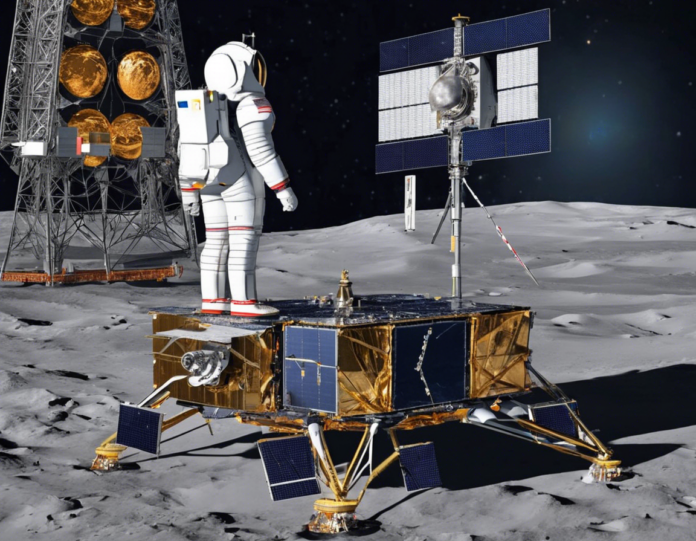Exploring the Cost of Chandrayaan 3
In recent years, India has made significant strides in space exploration. One of the most ambitious projects undertaken by the Indian Space Research Organisation (ISRO) is the Chandrayaan mission. The Chandrayaan program aims to explore the moon and conduct various scientific experiments to enhance our understanding of Earth’s natural satellite. Chandrayaan-1, launched in 2008, was India’s first lunar probe. Chandrayaan-2, launched in 2019, was India’s second lunar exploration mission, which included a lander named Vikram and a rover named Pragyan.
Following the partially successful Chandrayaan-2 mission, ISRO announced plans for Chandrayaan 3, the third lunar exploration mission as part of the Chandrayaan program. Chandrayaan 3 is aimed at achieving a soft landing on the moon, similar to Chandrayaan-2’s initial objectives. One of the key aspects that space enthusiasts and the general public are curious about is the cost of Chandrayaan 3. However, as of now, ISRO has not officially disclosed the exact cost of the Chandrayaan 3 mission. Nevertheless, based on previous missions and estimates from experts, we can delve into the potential cost implications of this ambitious lunar exploration endeavor.
The Components of Cost in a Lunar Mission
Before we dive into specifics, it is important to understand the various components that contribute to the cost of a lunar mission. These components are essential in estimating the total expenditure incurred during the planning, development, launch, and execution of a mission like Chandrayaan 3.
1. Research and Development:
- Research and development costs play a crucial role in the conceptualization and design of spacecraft, landers, rovers, and scientific instruments.
2. Launch Vehicle:
- The selection of an appropriate launch vehicle, expenses related to launch services, and associated logistical aspects significantly impact the total cost of a lunar mission.
3. Mission Operations:
- **Mission** operations include communication networks, ground control, tracking facilities, and data analysis capabilities, all of which are integral to the success of a lunar mission.
4. Payload:
- The payload consists of scientific instruments, cameras, spectrometers, and other equipment essential for conducting experiments and collecting data on the moon's surface.
Estimating the Cost of Chandrayaan 3
While ISRO has not officially revealed the cost of Chandrayaan 3, we can draw insights from the cost of previous missions, including Chandrayaan-1 and Chandrayaan-2, to speculate on the potential funding required for Chandrayaan 3.
1. Chandrayaan-1:
- Chandrayaan-1, India's first lunar mission, was launched in 2008 at an estimated **cost** of around **$79 million** (approximately INR 450 crores). This mission was dedicated to orbiting the moon and conducting scientific experiments.
2. Chandrayaan-2:
- Chandrayaan-2, despite facing challenges during the Vikram lander's descent, was a significant advancement for ISRO in terms of **lunar exploration**. The total estimated **cost** of Chandrayaan-2 was approximately **$141 million** (around INR 978 crores).
Potential Funding and Cost Estimates for Chandrayaan 3
Given the complex nature of lunar missions, especially those involving soft landings and rover deployment, Chandrayaan 3 is likely to entail a higher financial commitment compared to its predecessors. While exact figures are not available, experts speculate that the cost of Chandrayaan 3 could range between $150 million to $200 million (INR 1100 crores to 1470 crores).
FAQs (Frequently Asked Questions)
1. What is the Current Status of Chandrayaan 3?
- Chandrayaan 3 is currently in the planning stages, with ISRO working on finalizing the mission objectives, spacecraft design, and launch timelines.
2. When is Chandrayaan 3 Expected to Launch?
- While an official launch date has not been announced, speculations suggest that Chandrayaan 3 could launch between late 2022 and early 2023.
3. Will Chandrayaan 3 Include a Rover like Chandrayaan-2?
- Yes, Chandrayaan 3 is expected to include a rover similar to the Pragyan rover deployed during the Chandrayaan-2 mission.
4. How Does Chandrayaan 3 Differ from Chandrayaan-2?
- Chandrayaan 3 aims to achieve a soft landing on the moon, which was the primary objective of Chandrayaan-2 before the Vikram lander's unsuccessful touchdown.
5. What Scientific Objectives will Chandrayaan 3 Pursue?
- Chandrayaan 3 aims to conduct scientific experiments on the moon's surface, analyze lunar soil samples, and enhance our understanding of Earth's satellite.
In conclusion, while the exact cost of Chandrayaan 3 remains undisclosed, the mission represents a significant leap for India’s space exploration endeavors. The financial investment required for Chandrayaan 3 underscores the commitment of ISRO towards advancing scientific research and technological capabilities in space exploration. As updates on Chandrayaan 3 emerge, the space community eagerly anticipates the successful execution of this ambitious lunar mission.
